Plant of the Month
Every month we feature a plant that we think deserves a spotlight in Florida-Friendly gardening.
2024
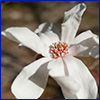 April
April
Star Magnolia – Star magnolia is slow growing, but the patient gardener is rewarded with excellent pest and disease resistance coupled with a spectacular show of spring blooms. Consider using it as a patio plant, a small specimen tree, or as an accent shrub. This magnolia prefers locations in full sun with rich, porous, and slightly acidic soil. Star magnolia can be planted in USDA Hardiness Zones 5A through 8B.
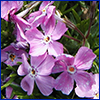 March
March
Phlox – A favorite of both pollinators and gardeners, phlox are no longer common in nurseries, but still worth adding to your garden. There are three main varieties: annual phlox, garden phlox, and creeping phlox. Annual and creeping phlox are native to North America, while garden phlox is native to the Eastern US. Phlox thrives in North Florida and can grow as far south as zone 10.
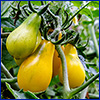 February
February
Trusty Tomatoes – They're one of the most popular edible plants to grow, but tomatoes tend to fall prey to a host of insect and disease problems. As a result, Florida gardeners are always on the hunt for trusty tomato varieties that they can count on to thrive in our climate and survive any attackers. We have a few tomato cultivars that are especially resilient.
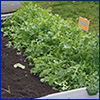 January
January
Arugula – Arugula (aka roquette or rocket) is a leafy green vegetable native to the Mediterranean. The edible leaves have a distinctive sharp, spicy flavor similar to mustard greens. Choose a planting location in full sun with well-drained and rich soil.
2023
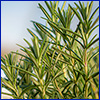 December
December
Rosemary – Native to the Mediterranean region, rosemary is a member of the mint family. This herb is often recommended to budding gardeners since it is easy to grow, drought tolerant, and relatively resistant to pests and diseases. This Florida-Friendly plant will thrive year-round, although it may need to be protected from freezes in colder areas of the state.
 November
November
Pecan – Native to North America, Carya illinoensis is massive in stature and can be an outstanding shade tree. Pecan trees are recommended for zones 5B through 9A in landscapes that are large enough to accommodate their size. Although pecan is not a low-maintenance tree, the reward of delicious nuts is enough to convince many gardeners to add it to their landscape.
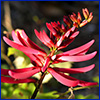 October
October
Coral Bean – A native plant that can add interest to the landscape from spring through fall, coral bean has vibrant red flowers that attract hummingbirds. The flowers are followed by black seed pods that crack open to reveal striking crimson seeds. Plant in zones 8 through 11, but take care with site choice; the seeds are poisonous.
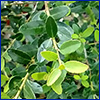 September
September
Yaupon Holly – Add wildlife interest and winter color to your yard with yaupon holly, one of the most durable and adaptable of the small-leaved evergreen hollies for Florida landscapes. Best suited for zones 7A through 9B, yaupon hollies should be planted in a spot where they'll receive full or partial sun. They are both drought and salt tolerant, meaning this plant can find a home in a variety of landscapes.
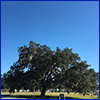 August
August
Live Oak – An iconic Southern tree, Quercus virginiana is a massive oak that can live for centuries when grown under the right conditions. Live oaks are an excellent choice for homeowners who are searching for sturdy, wind-resistant trees. If you've got the room, live oaks can be planted in zones 7B through 10B.
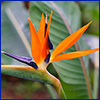 July
July
Bird of Paradise – Bird of paradise is a striking evergreen plant with blue-green foliage and showy orange and blue blooms that resemble a bird in flight. Its drought tolerance and pest resistance make it a favorite low-maintenance tropical plant. Strelitzia reginae thrives in USDA Hardiness Zones 10 through 11, although it can survive further north with frost protection.
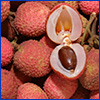 June
June
Lychee – Originally from southern China, Litchi chinensis is a subtropical fruit tree. This attractive tree produces fruit that turn bright red when ripe and reveal translucent white flesh with a delicate flavor. New leaves emerge bronze red and eventually turn a glossy green. Best suited for zones 10A-11, lychee thrives in well-drained acidic soil.
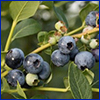 May
May
Blueberries – A favorite summer treat, blueberries are an important commercial crop in Florida. Luckily, they thrive in home gardens too. Our winters aren't cold enough for northern blueberry varieties, so UF/IFAS developed low-chill cultivars that can grow here. Rabbiteye blueberries are typically grown in North and Central Florida, while southern highbush is best suited to locations in Central Florida (zone 9a).
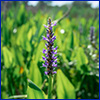 April
April
Pickerel Weed – This aquatic native plant is found throughout Florida. A flowering perennial usually found in shallow wetland areas or around the edges of lakes and ponds, pickerel weed has spikes of purple-blue flowers that appear in spring and continue through the summer into fall. A water garden winner, pickerel weed serves as food and habit for a variety of wildlife.
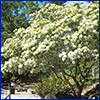 March
March
Fringetree – Also commonly called Grancy Greybeard and old man's beard, fringetree is a small deciduous tree that bursts into bloom in the spring. The flowers are composed of narrow, ribbon-like petals that are snowy white. In fact, the fringetree's botanical name means "snow flower." This small tree grows well in North and Central Florida.
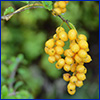 February
February
Golden Dewdrop – This evergreen shrub or small tree makes an attractive backdrop or privacy barrier. Its common name references the showy yellow fruits that cascade from the plant in the summer, but it offers flowers as well. Golden dewdrop grows to a maximum height of eight to 15 feet and is hardy in USDA zones 9B through 11.
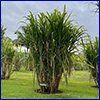 January
January
Sugarcane – With foodscapes increasing in popularity, one way you can add an attractive edible to your landscape is by planting sugarcane. This perennial grass from the genus Saccharum ranges in color from green to red to purple. There are different varieties for various intended uses; some are bred for chewing, while others are grown for crystalizing, or for making syrup.
2022
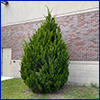 December
December
Red Cedar – Red cedar is a Florida native evergreen that adds year-round color and texture to your landscape. This tree is highly tolerant of both drought and salt spray, making it an excellent choice for a variety of landscapes. Its pleasing form makes red cedar also popular as a cut or living Christmas tree.
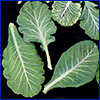 November
November
Greens – Rich in vitamins A, C, E, and K, greens are easy to grow and very nutritious. They're also a good source of calcium, potassium, folate, and iron. This group of plants includes spinach, collards, kale, mustard, and turnip greens. Generally considered cool-season vegetables, the time to plant these in Florida is August through February.
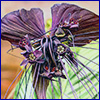 October
October
Bat Flower – With ghostly bracts that look like wings, the bat flower is a unique addition to any home gardener's collection. With a little extra care, this conversation starter can grow very well in Florida.
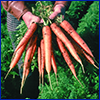 September
September
Carrots – A healthy vegetable that's easy to grow and doesn’t require a lot of room, carrots are fun to grow, especially with children. The most important thing about planting root vegetables is the soil; it should be loose and free of rocks or roots. Carrots can be planted August to March in North and Central Florida and from September to March in South Florida.
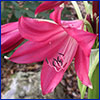 August
August
Crinums – Crinum lilies are a hallmark of the Southern landscape and have been cherished and cultivated by Florida gardeners for years. Several species of Crinum and dozens of varieties allow you to find the right look for your landscape, with plants ranging in height from 13 inches to 6 feet tall depending on the species.
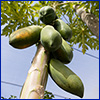 July
July
Papaya – Papaya is a tropical tree-like plant native to Central America. The ripe fruit is soft, juicy, and sweet, like a mango or melon. Commercially, papaya are usually grown in South Florida. With care, however, gardeners throughout Florida can enjoy papayas in their home landscape, too.
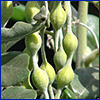 June
June
Necklace Pod – A charming choice for pollinator-friendly landscapes, this native shrub features graceful foliage and bright yellow blooms that attract butterflies all year long. Necklace pod is also a perfect coastal plant — highly salt and drought tolerant. It's well suited for USDA Hardiness Zones 9b-11.
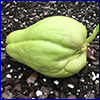 May
May
Chayote – A heat-loving, tropical vegetable, chayote is perfect for Florida's steamy summers. It is closely related to melons and squashes. Chayote vines climb and require support, such as a trellis or an arbor. The fruit have a texture similar to mature zucchini. Chayote can be planted throughout the state.
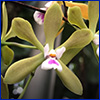 April
April
Florida Butterfly Orchid – One of the showiest native species, the Florida butterfly orchid has small flowers colored yellow, copper, green, orange, or bronze. A cluster of these blooms looks like a flutter of tiny, colorful butterflies. It grows as an epiphyte in almost every county in the state. Notably, the orchids can withstand a freeze, making them popular on the northern edge of their range.
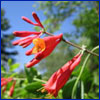 March
March
Coral Honeysuckle – Our native coral honeysuckle features scarlet flowers that bloom for months. And Florida's wildlife love it, too! The flowers attract hummingbirds and butterflies and then mature into berries that feed songbirds. This low-maintenance vine is a Florida-Friendly alternative to invasive Japanese honeysuckle. Coral honeysuckle (Lonicera sempervirens) grows all over Florida and further north, USDA Hardiness Zones 4 to 10.
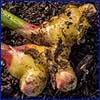 February
February
Edible Ginger – The leafy, grassy foliage of edible ginger adds a tropical backdrop for more colorful plants, but is best known for its underground stems, or rhizomes. This is the part of the plant that produces the "ginger" spice we love. It grows well throughout the state, too, as long as the soil is amended with organic matter. And for gardeners with tree-covered landscapes, ginger is one of the few crops that loves some shade.
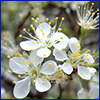 January
January
Chickasaw Plum – One of the first to flower each year and an excellent pollinator resource, this native tree grows quickly and will perform best in full sun, though it can also be planted in dappled shade. Each spring, the trees are covered with clusters of tiny, fragrant, white flowers. Then the small fruits appear, turning from red to yellow as they ripen. The tart plums can be eaten fresh or turned into tasty jelly, and they're also enjoyed by wildlife.
2021
- December – Red Maple
- November – Roselle
- October – Elderberry
- September – Elliot's Aster
- August – Thryallis
- July – Sweetsop
- June – Mangrove
- May – Horsemint
- April – Sparkleberry
- March – Rice
- February – Eastern Redbud
- January – Plumbago

